
| Bright Copper (previously known as Thecla aurifer) LUCIINI, THECLINAE, LYCAENIDAE, PAPILIONOIDEA | (donherbisonevans@yahoo.com) and Stella Crossley |
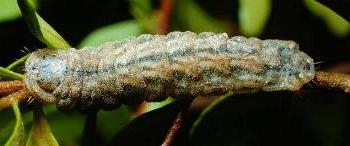
(Photo: courtesy of P. and M. Coupar,
Museum Victoria)

| Bright Copper (previously known as Thecla aurifer) LUCIINI, THECLINAE, LYCAENIDAE, PAPILIONOIDEA | (donherbisonevans@yahoo.com) and Stella Crossley |

(Photo: courtesy of P. and M. Coupar,
Museum Victoria)
This Caterpillar is green, brown or grey, with a dark dorsal stripe and diagonal markings. It has a black head, prothorax and tail. The caterpillar can evert a pair of tentacles from the tail. The caterpillar is always attended by :
The caterpillar has been found feeding nocturnally on plants in PITTOSPORACEAE including :
By day, the caterpillar typically hides in an ants nest at the foot of the food tree.
The caterpillar also pupates in the ants nest.

The adults are dark brown on top with a purple sheen, and have a yellow patch on each wing, and an arc of blue dashes along the rear wing margins. Underneath, they are pale brown, with a number of outlined fawn patches.
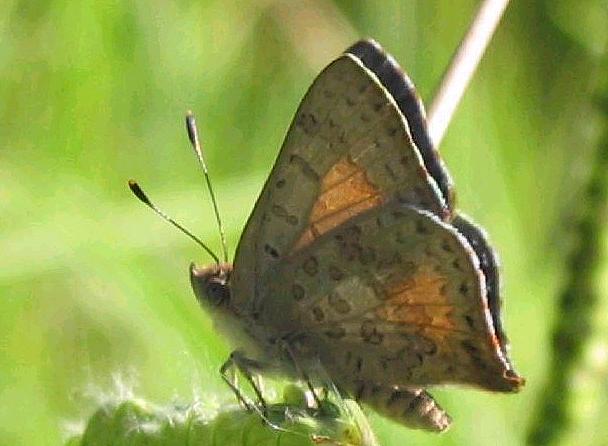
The wings of the males are rather pointed and the wings of the females rounded; at the apex and tornus. The butterflies have a wing span of about 3 cms.
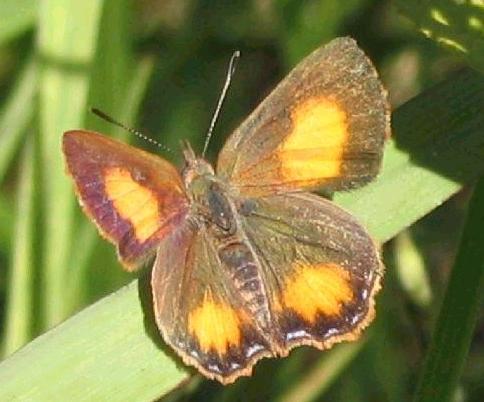
Restricted to bushland where its spiny foodplant is not cleared, this shy little copper is usually only seen within the vicinity one its host ant colonies.
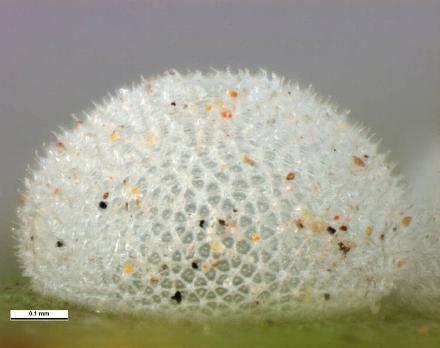
The eggs are dome-shaped, with a polygonal network of minute ribs, and are white, with a diameter of about 1 mm. They are laid singly on a leaf or stem of a foodplant.
The species occurs in
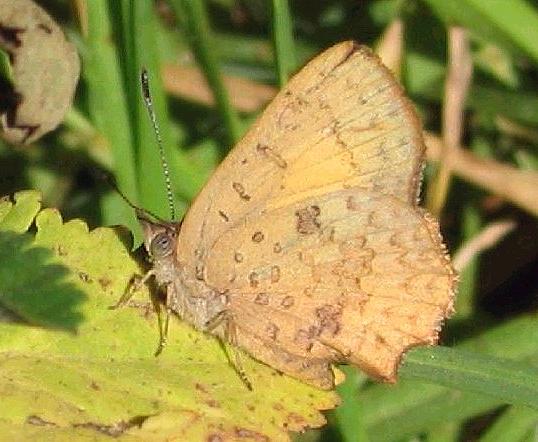
Further reading :
C. Emile Blanchard,
Description des Insectes,
Voyage au Pôle Sud et dans l'Océanie, sur les corvettes "l'Astrolabe",
Volume 4 (1853), pp. 400-401.
Michael F. Braby,
Butterflies of Australia,
CSIRO Publishing, Melbourne 2000, vol. 2, pp. 644-646.
 caterpillar |  butterflies |  Lepidoptera |  moths |  caterpillar |
(updated 25 December 2009, 3 April 2025)